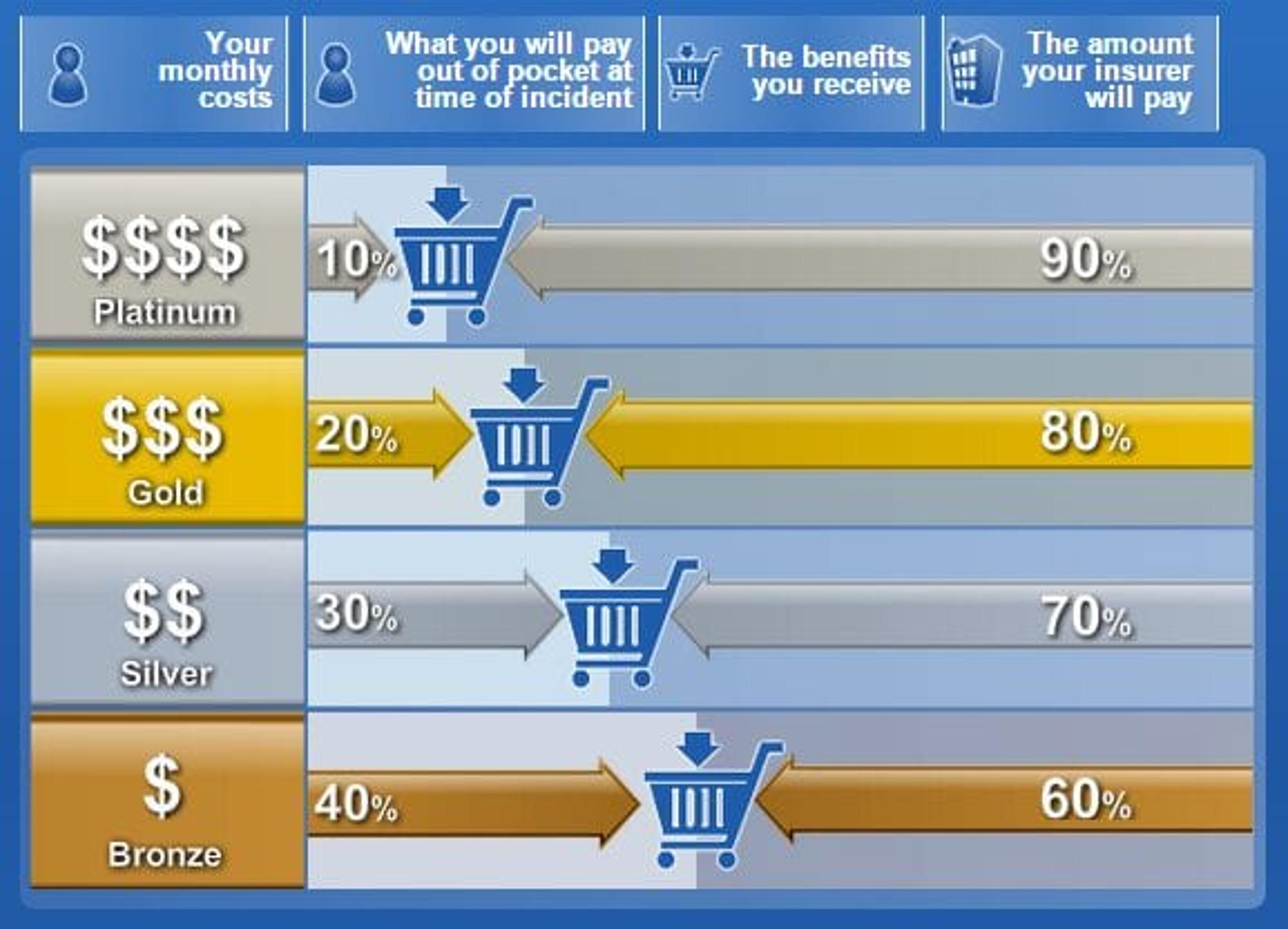Two Key Things to Consider When Choosing an Obamacare Plan
bcbsm
| 3 min read

If you’re an individual shopping for your own insurance this open enrollment period, you have a lot of options. Blue Cross Blue Shield of Michigan and Blue Care Network alone more than doubled the number of health insurance choices for individuals– from 18 to 41– during the 2015 open enrollment period. The reason we’re offering so much choice is simple: Our members told us they want more flexibility. But with so many options, how do you choose? There are two main things to look at when choosing an individual health plan: metal level and type of plan.
Metal Level
All health plans from all companies on the Marketplace will be arranged by four metal levels: Bronze, Silver, Gold and Platinum. While all plans should offer the same essential health benefits at all metal levels, your monthly cost for a health plan depends on the metal level you choose. Bronze plans cost the least per month, but your share of costs for medical care is the highest. You will pay more per month for a Silver, Gold or Platinum plan, but your share of costs is lower when you need care.

Type of Plan
Once you pick your metal level, the second thing you need to look at is the type of health plan you and your family need. All health plans have a network of physicians, hospitals and other health care professionals that agree to provide medical services at pre-negotiated prices and rates for plan members. The key difference between plans is how you interact with those networks. Here are the three main types of plans:
- PPO (Preferred Provider Organization): You may choose to receive covered services from an in-network or out-of-network doctor, but you will pay less if you choose in-network. You do not need a referral or authorization from your primary doctor or insurer to see a specialist.
- EPO (Exclusive Provider Organization): Your only have coverage within your local EPO network of doctors and hospitals. If you choose to receive care outside your local EPO network, you will pay all of the cost for the care except for services to treat emergencies. You do not need a referral or authorization from your primary doctor or insurer to see an in-network specialist.
- HMO (Health Maintenance Organization): Requires that you select a primary doctor who is responsible for managing and coordinating all of your health care. Your primary doctor has to provide you with a referral if you need care from a specialist or a diagnostic service such as a lab test or x-ray. If you do not have a referral or you choose to go to a doctor outside of your HMO’s network, you will most likely have to pay all of, or most of, the cost for the care.
Not sure which type of health plan to choose? Here’s a tip: Start by making a list of all the doctors you’ve seen in the past year, then use the BCBSM Find a Doctor tool to see if your doctor accepts a health plan you’re considering. To explore individual and family health plans, visit bcbsm.com/myblue. For more health insurance tips read our Health Insurance 101 blog series, visit bcbsm.com/101 or follow the hashtag #Covered101 on our social channels. If you have a specific question, please submit your query online through our Customer Action Center. Photo Credit: Julia Manzerova





